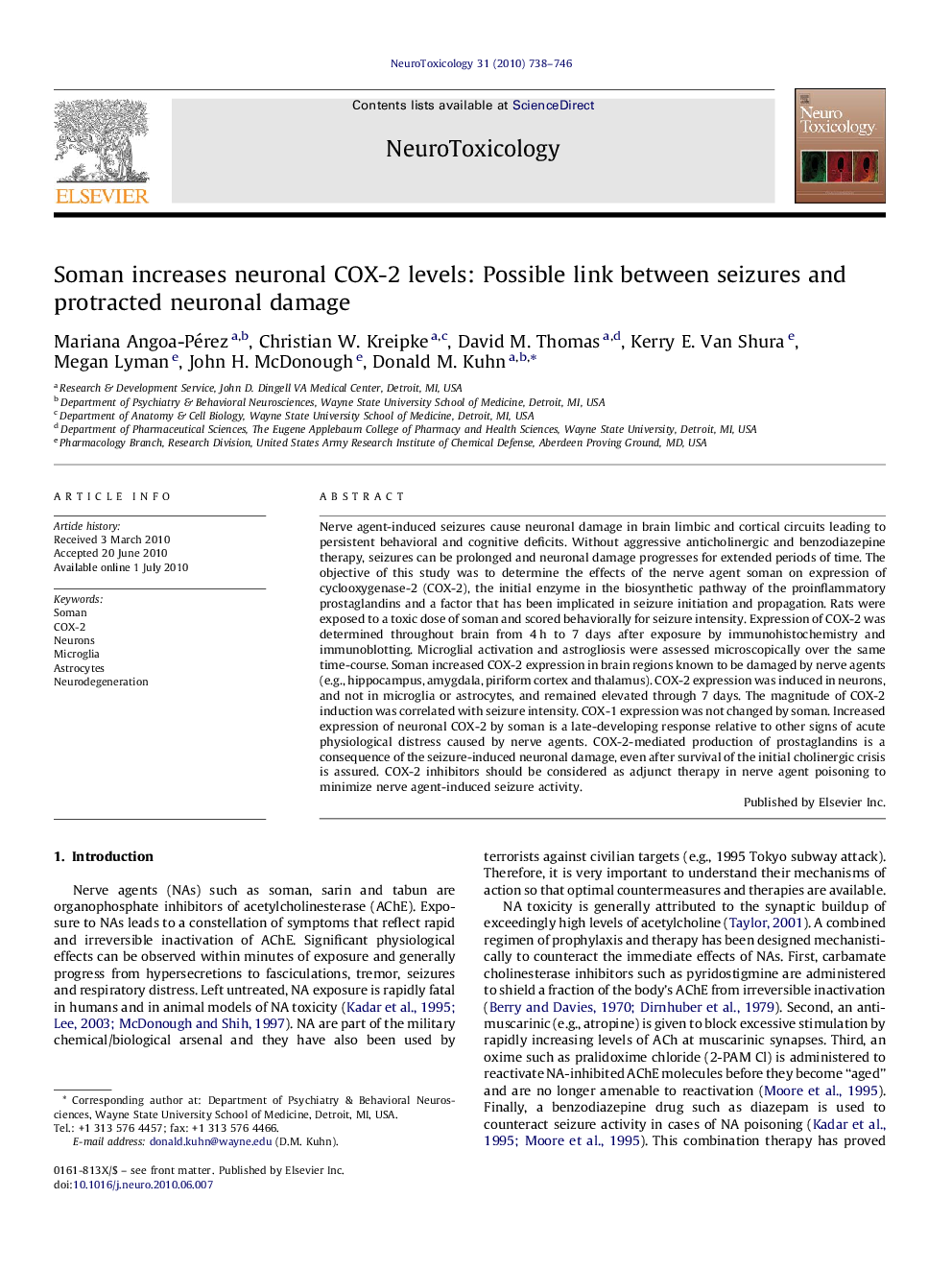| Article ID | Journal | Published Year | Pages | File Type |
|---|---|---|---|---|
| 2590569 | NeuroToxicology | 2010 | 9 Pages |
Nerve agent-induced seizures cause neuronal damage in brain limbic and cortical circuits leading to persistent behavioral and cognitive deficits. Without aggressive anticholinergic and benzodiazepine therapy, seizures can be prolonged and neuronal damage progresses for extended periods of time. The objective of this study was to determine the effects of the nerve agent soman on expression of cyclooxygenase-2 (COX-2), the initial enzyme in the biosynthetic pathway of the proinflammatory prostaglandins and a factor that has been implicated in seizure initiation and propagation. Rats were exposed to a toxic dose of soman and scored behaviorally for seizure intensity. Expression of COX-2 was determined throughout brain from 4 h to 7 days after exposure by immunohistochemistry and immunoblotting. Microglial activation and astrogliosis were assessed microscopically over the same time-course. Soman increased COX-2 expression in brain regions known to be damaged by nerve agents (e.g., hippocampus, amygdala, piriform cortex and thalamus). COX-2 expression was induced in neurons, and not in microglia or astrocytes, and remained elevated through 7 days. The magnitude of COX-2 induction was correlated with seizure intensity. COX-1 expression was not changed by soman. Increased expression of neuronal COX-2 by soman is a late-developing response relative to other signs of acute physiological distress caused by nerve agents. COX-2-mediated production of prostaglandins is a consequence of the seizure-induced neuronal damage, even after survival of the initial cholinergic crisis is assured. COX-2 inhibitors should be considered as adjunct therapy in nerve agent poisoning to minimize nerve agent-induced seizure activity.
